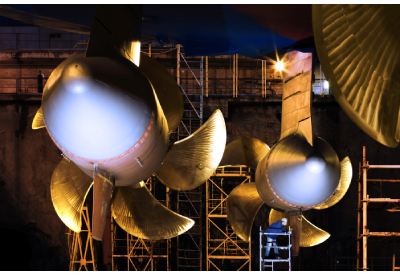EV Innovation & Technology Conference Spotlights Canada’s Strengths, Identifies Pain Points in Zero-Emission Automotive Supply Chain
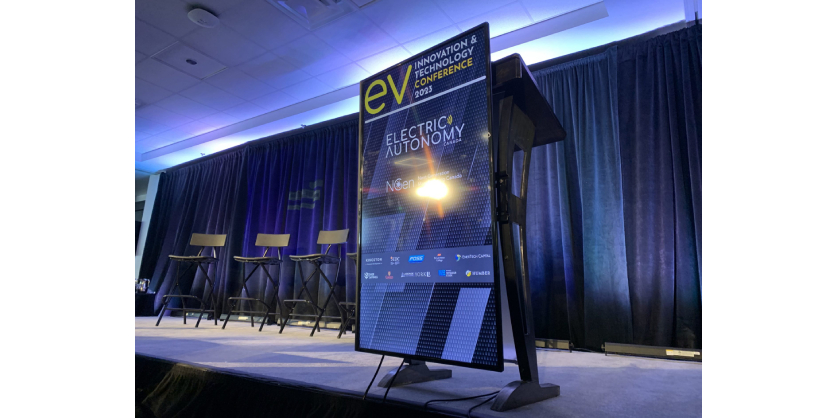
The all-day event, hosted by Electric Autonomy in partnership with NGen, brought together leaders advancing electric vehicle manufacturing in Canada to discuss opportunities, challenges and map the route to maximum success
February 10, 2023
Canada’s advantages in the race to develop the country’s EV economy potential are substantial, but the opportunities could “slip away” if urgent action is not taken.
That message was one of the key themes highlighted at the inaugural EV Innovation & Technology Conference this week in Toronto.
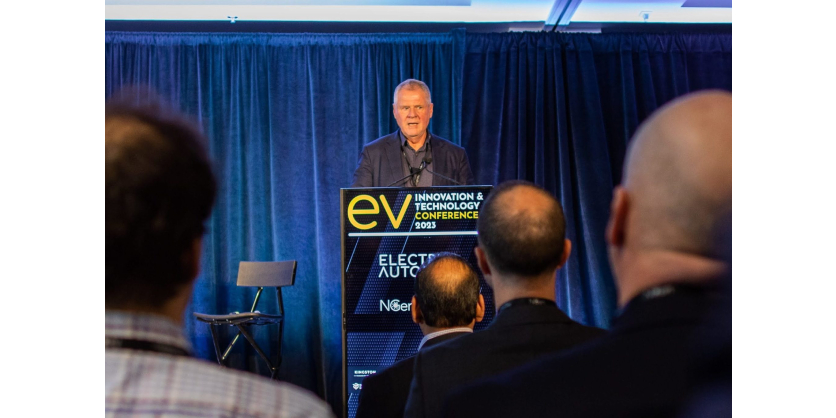
The one-day event was hosted by Electric Autonomy at Humber College’s Barrett Centre For Technology Innovation. It brought together private and public companies across the spectrum of Canada’s electric vehicle value chain to discuss the state of industry alongside municipal and provincial government officials and thought leaders in attendance.
“Innovation is a team sport,” said Jayson Myers, chief executive officer of conference partner Next Generation Manufacturing Canada (NGen) in an opening address. “We need to go to where the puck is going.”
Jayson Myers, Chief Executive Officer, Next Generation Manufacturing Canada
The sold-out event, with more than 200 participants, featured an eight-session program. An array of marquee speakers came to discuss Canada’s EV readiness, next-generation batteries, sustainable supply chain, talent gaps, policy challenges and much, much more. And the unveiling of a map of Canada’s EV supply chain — created in partnership between Accelerate, Electric Autonomy, NGen and Trillium Network for Advanced Manufacturing — offered a unique view of the depth and breadth of Canadian assets.
A summary of the conference discussions is below
Urgency a top concern for Canada’s EV supply chain
The day began with an all-women panel made-up of some of the most influential members of Canada’s automotive sector: Marissa West, president and managing director of GM Canada, Linda Hasenfratz, executive chairman and CEO of Linamar Corp., Lana Payne, national president of Unifor, and Rachel Doran, director of policy and strategy at Clean Energy Canada.
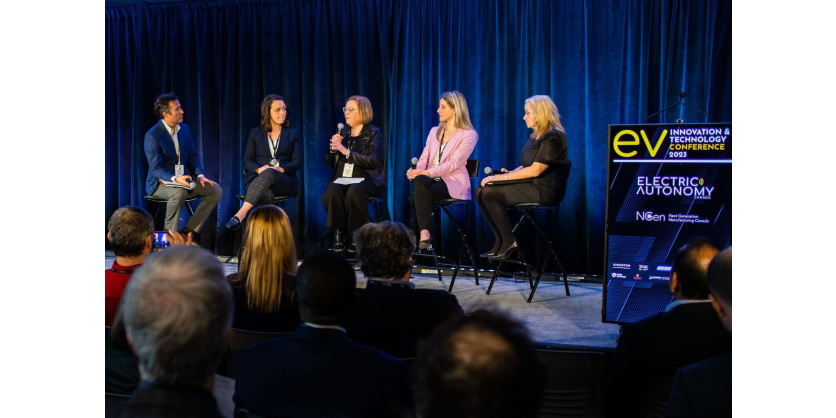
Their wide-ranging discussion, under the umbrella of “retooling manufacturing,” covered developing a skilled workforce, scaling EV production in Canada, policy imperatives and encouraging innovation.
But the key message threading through each topic? Urgency.
“It’s excruciatingly slow,” said GM Canada’s West, about getting development projects underway. “We cannot go through [this process] every single time.”
Marissa West, President and Managing Director of GM Canada
It was a sentiment echoed by Hasenfratz.
“You’re going to need a will because you’ll be dead before it’s done,” said Hasenfratz.
Linda Hasenfratz, Executive Chairman and CEO of Linamar Corp.
But, cautioned Clean Energy Canada’s Doran, “it’s going to be a tough balance.” Accelerating development should not come at the expense of Canada’s reputation as a green supplier. This identity is a major advantage on the global stage.
Despite the enormous potential, Unifor’s Payne emphasized that, red tape aside, nothing gets done if there isn’t a skilled workforce. This requires significant investment from industry to leverage at-home talent.
“We’ve been facing this demographic cliff for some time,” said Payne.
Lana Payne, National President of Unifor,
“We are in a unique moment where the world is looking at supply chains in a different way. Trying to localize more of that supply chain base is critical. That’s how we’ll get the jobs of the future.”
The need for upskilling the workforce and investing in post secondary and trade programs is “urgent” agreed the panel. Not taking immediate steps to “streamline” regulations and boost workforce training may mean Canada’s “opportunity slips away,” said West.
Putting the E, S and G in ESG
What does it mean to have a Canadian EV supply chain that’s strong in all three ESG pillars: environmental, social and governance?
It’s a simple question with a complicated answer.
“If we want to reshore our supply chain. But if our whole pitch is that we are greener — that’s not enough,” says Simon Thibault, senior director for the battery supply chain at Investissement Québec. “If you’re just ESG-compliant that’s not enough. Not in this climate. Ultimately, it’s an industrial policy.”
Simon Thibault, Senior Director for the Battery Supply Chain at Investissement Québec
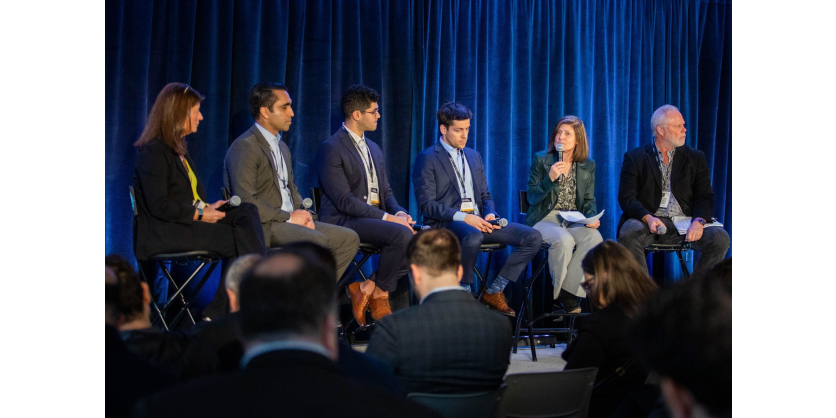
A true ESG supply chain, agreed speakers on the second panel of the morning, is based on a solid regulatory framework that supports and fosters sustainable business practices, leveraging local talent and resources and transparency.
It rewards both the good providers and the good consumers for adhering to the more stringent and rigorous standards.
The idea sounds great on paper, but it’s been more difficult to put into practice.
“It takes five to eight to 10 years trying to get the permits. That is where the risk lies. If you can eliminate that [by shortening the permit process] then you have a win-win,” said Ahmed Elganzouri, sustainability director at Magna International.
Ahmed Elganzouri, Sustainability Director at Magna International
A component of ESG currently impacted by slow permitting processes is battery recycling.
Eva Carissimi, vice-president and general manager at battery recycler Lithion, and Li-Metal president Kunal Phalpher — who help launch recycler Li-Cycle before moving to Li-Metal, a developer of lithium metal anodes and lithium metal production technologies for next generation batteries — agreed recycling is a crucial part of sustainable manufacturing for EVs. But that facet of the industry is having challenges scaling to meet the needs of the future.
“The regulatory framework [in Canada] today is not adapted to circularity,” said Carissimi.
Eva Carissimi, Vice President and General Manager, Lithion Recycling Inc.
But even where regulatory gaps are hindering progress, the pace of zero-emission vehicle adoption is forcing changes in the industry that span technology to legislation.
“The industry has changed more in the last five years — and will in the next five years — than it has in the last 50,” said Rob Wildeboer, chairman and co-founder of Martinrea International.
“You’re not in this business unless you are really innovative.”
Innovation 101: Go where the puck is going
In the race to discover and develop the next-generation battery, Canada holds a strong position — but it could be better.
While there is already coast-to-coast research and development, advanced testing facilities and an emerging manufacturing sector, “we need more,” said Asmae Mokrini, team lead materials for energy technologies at the National Research Council of Canada — one of six participants in an afternoon panel on next-generation batteries.
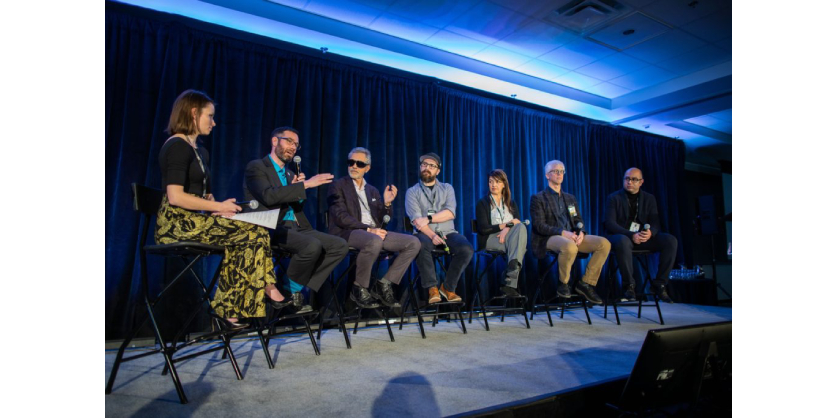
“We need more mines to have minerals, have responsible mining [and] have all the processes from the minerals to the battery-grade materials,” explained Mokrini. “We need to have that expertise in-house and innovate in that space as well as collaborate. I think these are the things we need to do fast.”
Asmae Mokrini, Team Lead Materials for Energy Technologies, National Research Council of Canada
Xanadu is a Toronto-based quantum computing hardware and software company. It holds partnerships with Volkswagen and BMW (among others) with the ultimate goal of using quantum computing to simulate battery materials in support of the design of future batteries.
Collaborating with OEMs on battery development has the potential to speed up battery material testing process significantly, said COO Rafal Janik. However, he cautioned that their work is more about the long-term — having an impact in five to 10 years — than more immediate innovations.
“The battery space is one that we chose to engage on for two main reasons. One, from an economics point of view, it’s very big and well-funded,” said Janik. “But more importantly it’s not a single computational challenge that we’re trying to solve. Everybody’s working on this mandate mission to build the quantum computer that can tackle these problems.”
Where the entire panel were aligned was in highlighting two major sticking points: securing a skilled workforce and pushing the pace of EV and battery innovation. Both issues require money to solve.
“What the government could be doing more is investing in people,” said Mark McArthur, director of internal R&D at Novonix. “Pushing through these new energy storage programs and looking at universities and all of this fun stuff.”
It’s a pain point in all areas of industry, not just batteries. However, within the skilled workforce, the battery technology sector has an additional challenge: experienced skilled workers.
“Twenty years of experience takes 20 years to build. You can’t fast-track that,” said Dan Blondal CEO, director and founder of Nano One Materials Corp.
Dan Blondal CEO, director and founder of Nano One Materials Corp
There is talent around the globe with high levels of experience but the challenge is funnelling them into Canada.
“We have to activate a program to allow us to bring at least a modicum of that talent to Canada to be the educators of our growing workforce,” said Blondal.
Dan Blondal CEO, director and founder of Nano One Materials Corp
Preparing for the next bend in the road to EV innovation
The final panel of the day focused on bridging the talent gap. Attendees heard how, in addition to drawing talent to Canada, other members of the industry are also concentrating on leveraging more of the existing talent at home.
“We need more people in the pipeline. We need them now and we can’t wait two years,” said Guido Benvenuto, vice-president of engineering at automotive components maker Flex-N-Gate.
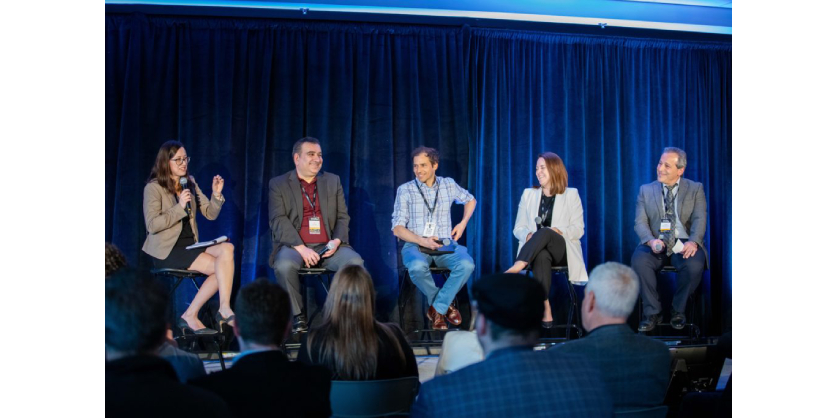
Many workers in the auto industry are concerned EV manufacturing will mean the loss of tens of thousands of jobs. While this is true for some Tier 2 and Tier 3 auto parts makers, that doesn’t mean there won’t be other jobs to fill.
EVs require their own parts and ecosystem support. The faster the transition happens the more jobs there will be to fill.
“If you’re going to build a talent pipeline you need to do it right and you need to do it with some longevity,” said Lauren Tedesco, senior vice-president at the Automotive Parts Manufacturers’ Association.
Lauren Tedesco, senior vice-president at the Automotive Parts Manufacturers’ Association
It’s now imperative that companies and governments direct workers at all levels of experience into upskilling programs, agreed the panel, which also included Ali Emadi, professor and Canada Excellence Research Chair Laureate at McMaster Automotive Resource Centre (MARC), and Simon Pillarella, director of skilled labor and funding at Propulsion Québec.
The session highlighted an array of training, upskilling and recruitment programs already underway.
MARC, for example, hosts the biggest university program in transportation electrification in North America. It also recently began offering short-course training programs for engineers already in the industry needing retraining in electric motors, power electronics and batteries — new areas of high demand in the EV sector.
To support the growth of Quebec’s EV sector, Pillarella outlined how Propulsion Québec’s EnRoute program — a career hub in electric and smart transportation — is providing a forum, in-person and online, where companies and job seekers can connect.
Two APMA talent programs cited are Driven and the Equity Diversity Inclusion Fund (EDIF). The former is online training that provides upskilling for workers in the industry. The latter helps recruit prospective hires from minority and underrepresented communities and provides them with intern-style short-term postings with the goal of those leading to permanent placements. To date, the EDIF program has a 100 per cent hire rate.
Tedesco also advocates for creating awareness about jobs in the automotive sector, skilled trades and tech at the high school and even elementary school-levels.
And now there is a useful real-world example to point to when talking about the viability of these careers.
Tedesco was part of the team that developed and made the all-Canadian IP vehicle, Project Arrow. It is a significant body of work. Not only does it showcase the literal nuts and bolts of Canada’s auto and tech sector, but it proves next-generation cars can be built successfully in Canada.
“We built an entire vehicle and demonstrated what the future can hold for kids,” says Tedesco.
Lauren Tedesco, senior vice-president at the Automotive Parts Manufacturers’ Association
Ministerial and CEO keynotes
The EVIT program also featured a pair of morning and afternoon keynote presentations and a closing fireside chat between NGen’s Myers and Victor Fedeli, minister of Economic Development, Job Creation and Trade with the Government of Ontario.
The latter provided a tantalizing teaser about the years ahead in the province’s EV battery supply chain.
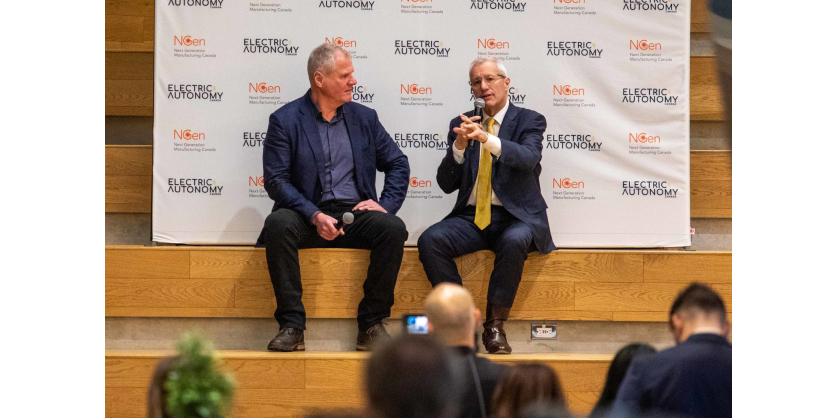
“You’re going to see four lithium mines, two nickel mines, a lithium hydroxide facility in NW Ontario…and recycling as well. But I’m just crystal-balling — of course,” said Fedeli.
Victor Fedeli, Minister of Economic Development, Job Creation and Trade, Government of Ontario
The morning keynote, split between John Laughlin, chief technology officer at NGen, and Matthew Fortier, president and CEO of Accelerate, the Canadian EV supply chain alliance, assessed Canada’s EV market readiness and highlighted the strategies in place to help ensure Canada’s EV ecosystem achieves its full potential.
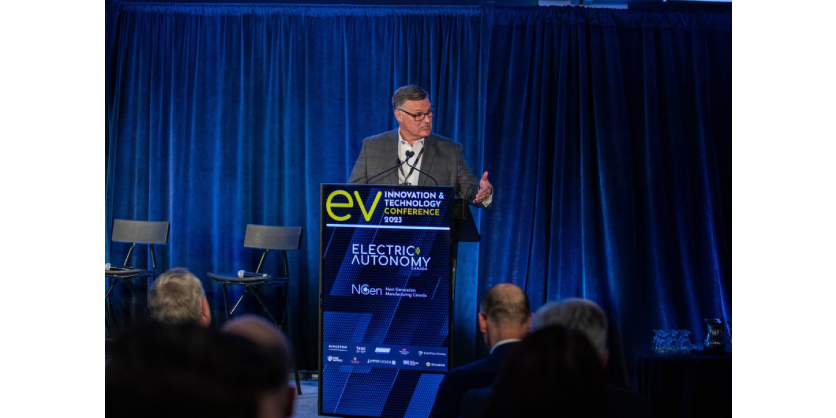
In his afternoon keynote, Honda Canada CEO Jean Marc Leclerc called for industry cohesion to tackle the key issues of the day: urgency, building out infrastructure and developing a skilled workforce.
“To progress as fast as the auto industry is mandated to move, there needs to be a massive coordination effort,” said Leclerc. “And that effort needs to be led by government.”
Jean Marc Leclerc, President and Chief Executive Officer, Honda Canada Inc
Related Story
Energy Technology Perspectives 2023
Energy Technology Perspectives 2023, the latest instalment in one of the IEA’s flagship series, serves as the world’s first global guidebook for the clean technology industries of the future. It provides a comprehensive analysis of global manufacturing of clean energy technologies today – such as solar panels, wind turbines, EV batteries, electrolysers for hydrogen and heat pumps – and their supply chains around the world, as well as mapping out how they are likely to evolve as the clean energy transition advances in the years ahead.


